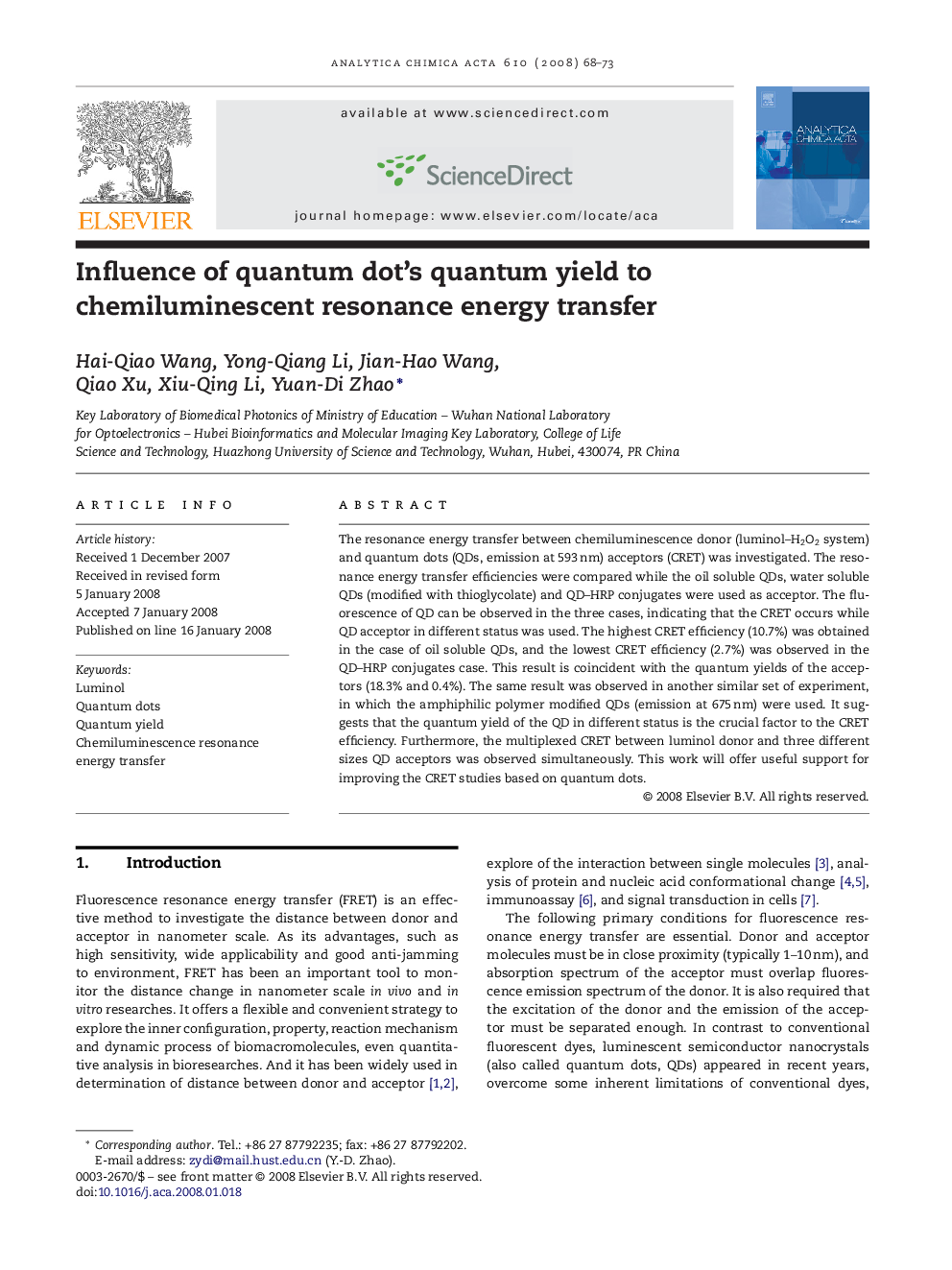| Article ID | Journal | Published Year | Pages | File Type |
|---|---|---|---|---|
| 1170051 | Analytica Chimica Acta | 2008 | 6 Pages |
The resonance energy transfer between chemiluminescence donor (luminol–H2O2 system) and quantum dots (QDs, emission at 593 nm) acceptors (CRET) was investigated. The resonance energy transfer efficiencies were compared while the oil soluble QDs, water soluble QDs (modified with thioglycolate) and QD–HRP conjugates were used as acceptor. The fluorescence of QD can be observed in the three cases, indicating that the CRET occurs while QD acceptor in different status was used. The highest CRET efficiency (10.7%) was obtained in the case of oil soluble QDs, and the lowest CRET efficiency (2.7%) was observed in the QD–HRP conjugates case. This result is coincident with the quantum yields of the acceptors (18.3% and 0.4%). The same result was observed in another similar set of experiment, in which the amphiphilic polymer modified QDs (emission at 675 nm) were used. It suggests that the quantum yield of the QD in different status is the crucial factor to the CRET efficiency. Furthermore, the multiplexed CRET between luminol donor and three different sizes QD acceptors was observed simultaneously. This work will offer useful support for improving the CRET studies based on quantum dots.
